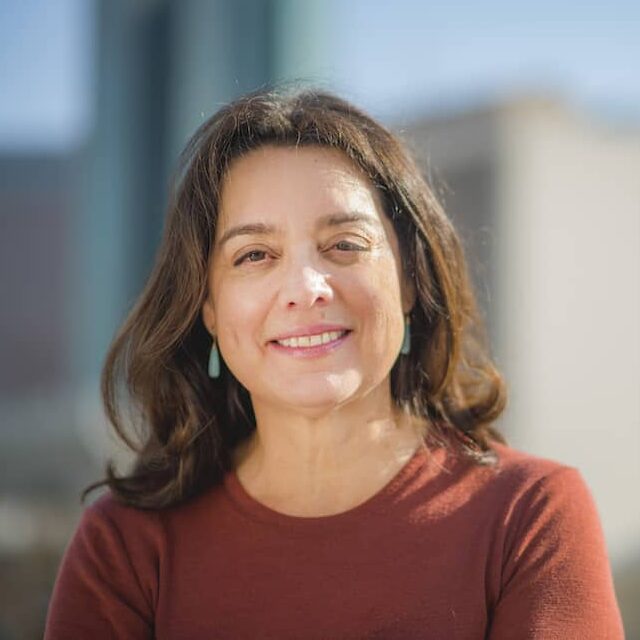“Tell me a bit about the broader consequences that we found happen to a community when they lose their sources of local news.”
“Well, there’s a lot of things that happen and none of them are good.”
Dear reader,
I returned this week to that July 22nd exchange between Vox’s Ezra Klein, the questioner, and The Washington Post’s media columnist Margaret Sullivan for a couple reasons.
One has to do with an effort undertaken by a coalition representing several thousand newsrooms pushing for passage of the federal bi-partisan Local Journalism Sustainability Act, a package of tax credits for individuals and small businesses to support news organizations.
The other has to do with Yesenia Arreola, Beatriz Soto and Alex Sánchez.
The three live in a news desert, not one defined by the lack of news outlets, but by the lack of news outlets that cover in-depth, in Spanish, in a consistent, culturally informed way the Latino communities strung through the Eagle River, Colorado River and Roaring Fork valleys from Aspen to Parachute. This stretch of Colorado splendor is home to thousands of Latino families, who, like Arreola, Soto and Sánchez are immigrants or children of immigrants, many working in the essential industries of mountain, ranching and farming communities: construction, ag, hospitality.
News about, to and for these communities comes via social media. It comes via government outreach. It comes via Spanish-language radio stations, which are not headquartered locally and not news stations, but whose hosts have assumed the responsibility of, say, interviewing the Garfield County Public Health department about COVID because 30% of county residents are Latino and they are disproportionately affected by the new coronavirus. The English-dominant newsrooms do what they can to cover these communities, working themselves into exhaustion while hamstrung by advertising losses, by furloughs, by reduced print runs, by what the coalition I mentioned above, Rebuild Local News, frames within the context of “the collapse of local news.”
“The COVID pandemic is a great example of how news deserts and information deserts become vacuums and how dangerous that can be,” says Sánchez, the executive director and a co-founder of Voces Unidas de las Montañas, a nonprofit that is working to empower Latinos throughout the valleys. “The consequence of not having reliable information during a pandemic is a higher percentage of people not knowing what to do, not knowing where to go, not having the right information about the public health orders. You are seeing the consequences now.”
Sullivan provided examples of other consequences: People become less politically engaged. They don’t vote as often and when they do they tend to vote straight down the party line. Without watchdogs, multiple studies have shown, governments become more wasteful, more corrupt, less efficient.
So, I come to you as part of COLab’s effort to bolster local news throughout Colorado. I come to you knowing reporters who never seem to stop working because someone has to cover the county commission meeting and someone needs to keep an eye on that proposed zoning update and someone needs to tell you that that local government official who swore to serve residents sure as hell has not been. I come to you after conversations with Sánchez, Soto and Arreola and with the realization that there may be no one better to explain what you lose when you lose local news coverage than those who are living now with the consequences of its absence.
“News is power,” says Arreola, an administrator at Colorado Mountain College. “It equips people to make decisions, to be engaged citizens. I see it from a social justice perspective. It is the just thing to do to provide access to information and when you don’t do that, when I see it in my own community, it becomes personal. It becomes emotional.”
The absence of news, she, Sanchez and Soto say, benefits only the status quo.
“It perpetuates the power structure,” says Soto, an architect turned advocate for environmental justice. “It perpetuates division. It does not allow more diverse community members to be able to make social change because people are ill-informed on what is needed in the community. It allows people to pretend that everything is fine, to pretend that we are not complex, that we don’t care, that we don’t understand — when that is not the reality.”
Here is my ask: Go to the Rebuild Local News website and then consider reaching out to our congressional representatives to ask them to support the Local Journalism Sustainability Act. The website makes it easy to email, call, tweet your rep. It’s a small ask with a vital payoff for newsrooms, for readers, and for the communities we share.
With thanks,

Tina
This post originally appeared in our newsletter to readers on Friday, July 31, 2020. Sign up for the newsletter here.




